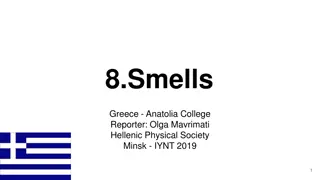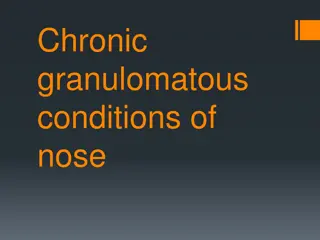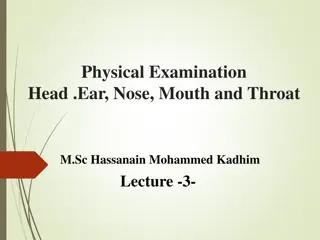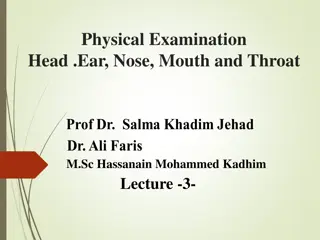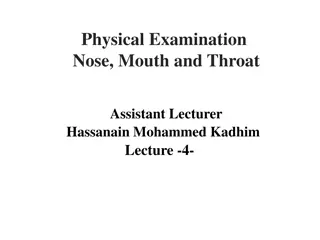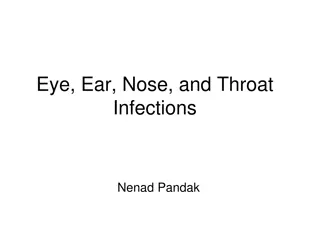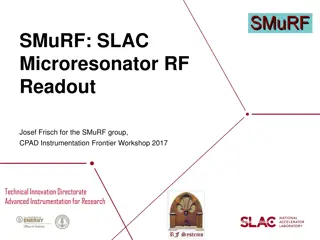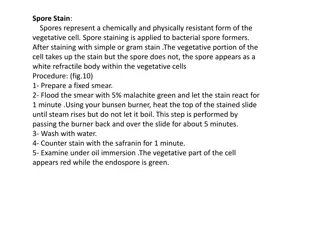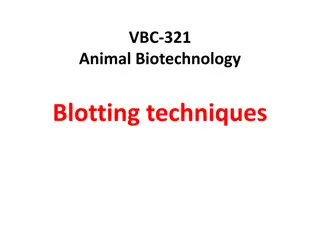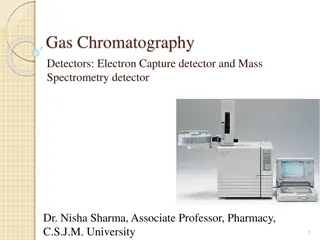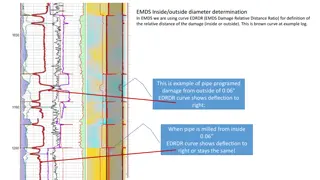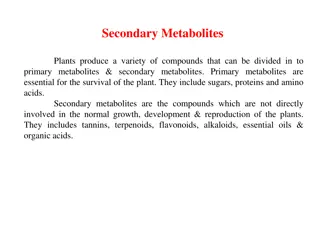Unveiling the Intriguing World of Olfaction: How Your Nose Detects Scents
The nose plays a vital role in both sensing and identifying smells. It is not only responsible for filtering, warming, and humidifying the air we breathe but also serves as the primary olfactory organ. Specialized nerve cells in the nasal cavity detect thousands of different odors, which are then sent directly to the brain for interpretation. For a substance to be smelled, it must meet specific criteria such as being odoriferous, volatile, in sufficient concentration, and in contact with the receptor cells. Explore the fascinating mechanisms behind how our noses work in perceiving scents.
Download Presentation

Please find below an Image/Link to download the presentation.
The content on the website is provided AS IS for your information and personal use only. It may not be sold, licensed, or shared on other websites without obtaining consent from the author. Download presentation by click this link. If you encounter any issues during the download, it is possible that the publisher has removed the file from their server.
E N D
Presentation Transcript
How does it work? https://www.youtube.com/watch?v=snJnO6OpjCs Nose Blind = Sensory Adaptation https://youtu.be/zaHR2MAxywg?t=48s
The Nose - Smell Besides filtering, warming and humidifying air the nose s other job is as an olfactory (smell) organ. The top of the nose is formed by 2 bones nasal bones The end of the nose is made of cartilage
The Nose - Smell The olfactory (smell) area is located in the top of the nasal cavity This area has specialized nerve cells that detect odours called the olfactory bulb The nose can detect about 10k different odours The info is sent directly to the brain
Smelling For a substance to be perceived by the nose 4 conditions must be met: It must be odoriferous, of a chemical nature that stimulates the smell receptor cells It must be volatile (gaseous), transported by the air It must be in a sufficient concentration to stimulate receptor cells It must come into contact with the receptor cells (not blocked by mucus) 1. 2. 3. 4.




